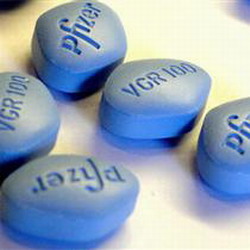Science and Health
FDA: 'Female Viagra' falls short
(Agencies)
Updated: 2010-06-17 11:09
 |
Large Medium Small |
|
 In this Oct 30, 2007 file photo, employees are silhouetted at the Boehringer Ingelheim pharmaceutical factory in Ingelheim, central Germany. [Agencies] |
WASHINGTON -- Federal health regulators said on Wednesday the first pill designed to boost the female sex drive failed to make a significant impact on libido in two studies.
Despite missing that goal, the Food and Drug Administration said women did report slightly more sexually satisfying experiences.
Boehringer Ingelheim has asked the Food and Drug Administration to approve its drug flibanserin for women who report a lack of sexual desire, a market that drugmakers have been targeting for more than a decade since the success of Viagra in men.
The search for so-called "female Viagra," has proved elusive though, with many drugs abandoned after showing lackluster results.
On Friday the FDA will ask a panel of experts to weigh in on the safety and effectiveness of Boehringer's drug. The agency is not required to follow the group's advice, though it often does.
|
 This undated handout file photo by US drugmaker Pfizer shows its Viagra pills for men with sexual arousal problems. [Pfizer.com] |
The FDA will also ask its experts to comment on increased side effects like depression, fainting and dizziness seen among women taking the pill.
The drug, which is related to the antidepressant family, affects serotonin and several other brain chemicals, though it's not clear how that increases sex drive.
"We don't know specifically what the exact mechanism of action is but we believe it acts on brain chemicals that have a role in human sexual response," said Dr. Peter Piliero, executive director for Boehringer's US medical affairs.
Privately-held Boehringer Ingelheim posted sales of $12 billion last year. The Ingelheim, Germany -based company makes a range of prescription drugs for heart disease, HIV and other diseases.
Since the launch of Viagra in 1998, more than two dozen experimental therapies have been studied for so-called "female sexual dysfunction," a market which some analysts estimate at $2 billion.
The FDA has approved an unusual handheld vacuum device that increases blood flow to the clitoris to increase sexual arousal. But all drug therapies have fallen short so far.
In 2004, Pfizer halted its study of Viagra in women due to inconclusive results. Later that year an FDA panel rejected Procter & Gamble's testosterone patch Intrinsa, due to risks of heart disease and cancer.
Smaller companies are currently developing creams and nasal sprays to increase female libido.
Dr. Elizabeth Kavaler, a urologist at Lenox Hill Hospital in New York, says arousal in women is so complicated that it may be unrealistic to expect a pill to completely address sexual problems.
"It's a fairly complicated area, unlike in men's sexual dysfunction where there's a major mechanical concern," said Kavaler. "In women there's no mechanical concern, so if she's not having a successful sex life, where is the problem?"